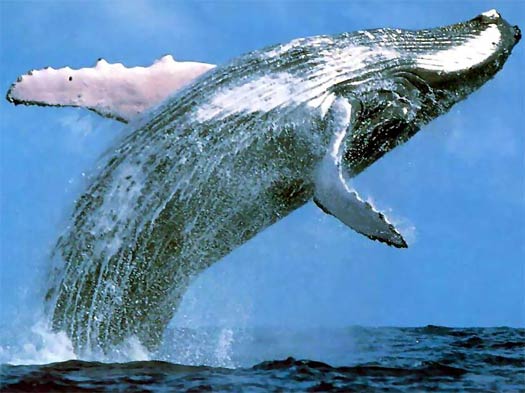Cetacea – Marine Mammals

humpback whale breaching
Cetacea is the order or group of animals including almost all marine mammals – dolphins, whales and porpoises. A few dolphins in the group live in fresh water rivers. Cetacea does not include walruses, seals or the sirenas – manatee, sea cow and dugong. Within this group there are two groups, the baleen whales that use filters to separate their food from the water and the rest that use their teeth to chew and eat like most mammals.
The toothed marine or river mammals make up the majority of the cetacea being 67 of 77 species:
- river dolphins: 5 – including the Ganges river dolphin
- porpoises: 6 – pretty much like dolphins but have more rounded mouths
- dolphins: 32 (including 4 river dolphins (including a pink one))
- sperm whales: 3 – like Moby Dick
- white whales: 2 – narwhals, belugas
- beaked whales: 18
These species (listed above, not baleen whales) use echolocation or sonar to sense their environment. They direct clicks outward toward objects in the sea which causes sound waves to hit the objects. The sound waves then bounce back and are understood by the whales to identify object size, distance, trajectory and more. The great ability of water to carry and amplify sound is the reason they don’t need external ears. Operation of this sensory system has uses in navigation and predation in murky oceans. It is thought that human radar, sonar systems and general noise-making in the water can be very disturbing to these animals.
The baleen whales are slower and larger, with the largest of all – the blue whale belonging to their group. The sperm whale is the largest of the toothed whales and the smaller dolphins are the smallest of the cetacea.

